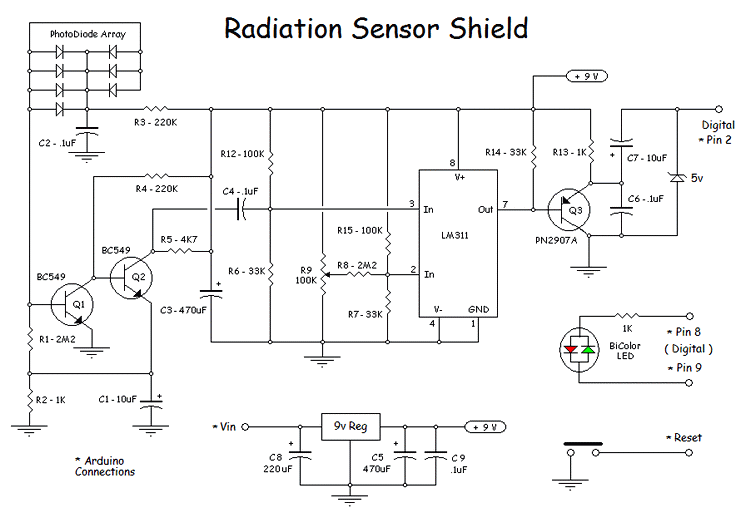I've built a number of Arduino based projects ... usually related to bats ... but I have always been interested in making a logger that would monitor and record background gamma and X-ray radiation levels over long periods of time. This interest stems from living in Las Vegas all my life, where nuclear bombs were ( are ? ) tested not too far away.
After experimenting with a number of circuits, I settled on one that was published in the June, 2011 issue of Elektor Magazine, by Burkhard Kainka.
Interestingly, the article is not where I first saw this circuit, as it had also been used in a DIY kit I purchased to construct a hand-held radiation detector.
In any case, the circuit has some eccentricities, but actually works pretty well. You can see the finished Radiation Sensor shield on the top of the Arduino stack at the left.
The complete schematic of the shield, as I finally built it, is shown in the diagram below...
